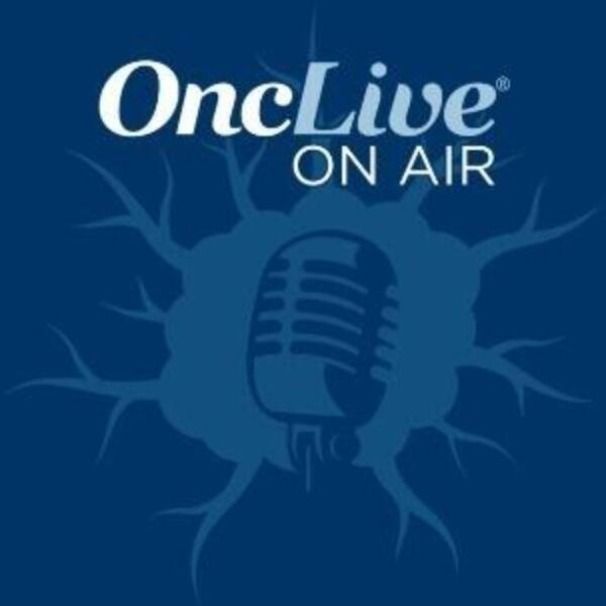Article
CLDN6 CAR T-Cell Therapy Shows Encouraging Efficacy in Relapsed/Refractory Advanced Solid Tumors
Author(s):
The investigational carcinoembryonic antigen claudin 6 (CLDN6)–directed CAR T-cell therapy BNT211-01 displayed clinical activity both as monotherapy and in combination with a CLDN6-encoding mRNA vaccine in patients with CLDN6-positive relapsed/refractory advanced solid tumors.
Andreas Mackensen, MD

The investigational carcinoembryonic antigen claudin 6 (CLDN6)–directed CAR T-cell therapy BNT211-01 displayed clinical activity both as monotherapy and in combination with a CLDN6-encoding mRNA vaccine in patients with CLDN6-positive relapsed/refractory advanced solid tumors, according to findings from the phase 1/2a trial (NCT04503278) presented during the 2022 ESMO Congress.
At the June 15, 2022, data cutoff among 21 efficacy-evaluable patients, the overall response rate (ORR) was 33%, including 1 patient who experienced a complete response (CR) and 6 patients who achieved a partial response. Additionally, 7 patients achieved stable disease (SD), and the disease control rate (DCR) was 67%.
“BNT211-01 is a CAR T-cell product candidate that targets the CLDN6, a tight junction associated membrane protein,” Andreas Mackensen, MD, a professor in the Department of Internal Medicine 5—Hematology/Oncology at the University Hospital Erlangen in Germany, said during the presentation. “CLDN6 is an ideal CAR antigen [because] it has an extracellular loop that can be targeted by T cells, is absent in healthy adult tissue since it is silenced during organogenesis, and is expressed in various cancer, such as testicular cancer and ovarian cancer.”
Patients with testicular cancer expressed CLDN6 at a rate of approximately 93%, and it is present in a little over half of patients with ovarian cancer (56%).
The phase 1/2a trial followed a 3+3 design with bifurcation. Patients an ECOG performance status of 1 or less and measurable disease by RECIST 1.1 criteria were eligible. CLDN6-positivity was defined as at least 50% of tumor cells being CLDN6-high.
In part 1 of the phase 1 portion, patients received BNT211-01 monotherapy at a dose of 1 x 107 CAR T cells (dose level 1; n = 3) or 1 x 108 CAR T cells (dose level 2; n = 6). In part 2 of phase 1, 4 patients received dose level 1 of BNT211-01 plus the CLDN6-encoding mRNA vaccine and 9 patients received dose level 2 in combination with the vaccine.
Apheresis and CAR T manufacturing were performed at day –18 or earlier. Patients then underwent lymphodepletion with cytarabine plus fludarabine on days –5 to –3. CAR T-cell infusion was performed on day 1. Patients also given the vaccine were administered the first dose on day 4. The first 5 vaccine treatments occurred every 3 weeks, followed by a treatment every 6 weeks thereafter.
The median age of the total safety population (n = 22) was 46 years (range, 25-68) and most patients were male (n = 15). The population was heavily pretreated with a median of 4 (range, 3-9) prior lines of therapy.
Additional findings from the trial showed that patients with testicular cancer treated at dose level 2 with lymphodepletion (n = 7) experienced a better response than the overall population, achieving an ORR of 57% with a DCR of 85%. The ORR for the total population of patients with testicular cancer who received either BNT211-01 dose with lymphodepletion was 45% with a DCR of 54%.
One patient with testicular cancer who previously underwent 6 lines of treatment with chemotherapy was still in an ongoing CR at the data cutoff. This was a patient with a large tumor mass at baseline that displayed an impressive regression at 6 weeks following CAR T-cell therapy and became PET-negative over time, Mackensen noted.
Regarding safety, 20 patients in the safety population experienced a grade 3 or higher treatment-emergent adverse effect (TEAE). A single case of grade 1 immune effector cell-associated neurotoxicity syndrome was reported, and it quickly resolved.
Cytokine release syndrome (CRS), a common TEAE accompanying CAR T-cell treatments, was present in 10 patients (45%). Increased levels of interleukin 6 were present in patients with CRS. All instances of CRS were grade 3 or less and were manageable with tocilizumab (Actemra), if needed.
Dose-limiting toxicities (DLTs) were observed in 2 patients, including 1 treated at dose level 2 alone and 1 treated at dose level 2 in combination with the CLDN6-encoding mRNA vaccine. The DLTs consisted of prolonged pancytopenia after lymphodepletion for the patient treated with the CAR T-cell monotherapy and hemophagocytic lymphohistiocytosis for the patient treated with the combination, though this toxicity occurred before administration of the CLDN6-encoding mRNA vaccine. Eight total patients died during the trial, all from disease progression.
In terms of pharmacokinetics, a strong persistence of CAR T cells was reported for over 100 days. A few patients also displayed persistence for over 200 days.
“Some patients showed long-term CAR T-cell persistence for more than 200 days post CAR T-cell infusion,” Mackensen said. “The process of generation of CLDN6 CAR T-cells has now been switched to an automated process and dose escalation is ongoing. The recommended phase 2 dose will be identified for the automated product [in the future].”
Reference
Mackensen A. BNT211-01: A phase I trial to evaluate safety and efficacy of CLDN6 CAR T cells and CLDN6-encoding mRNA vaccine-mediated in vivo expansion in patients with CLDN6-positive advanced solid tumours. Presented at: 2022 ESMO Congress; September 9-13, 2022; Paris, France. Abstract LBA38









